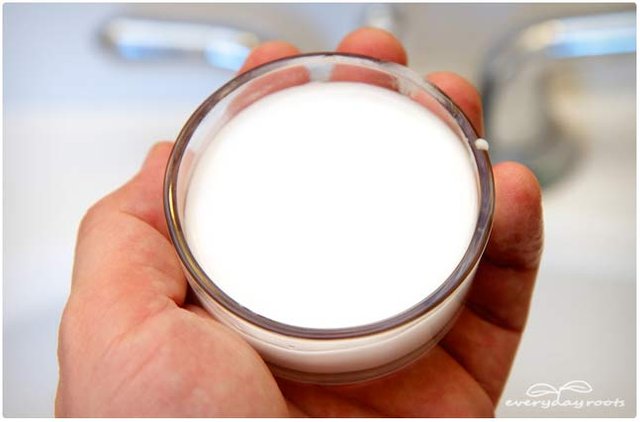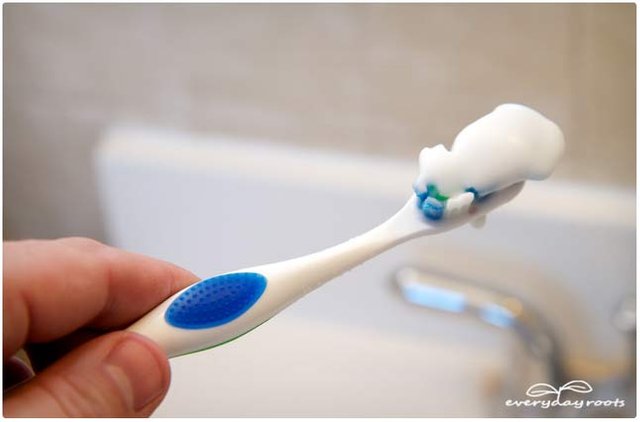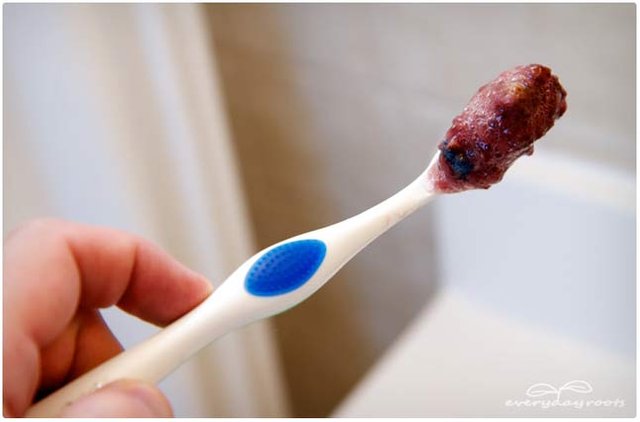Tips for whitening teeth
- Routine. Set up a routine using these remedies and stick to it, at all costs, to get the most out of them.
- While not “natural” per say, using 3% (I repeat, 3%) hydrogen peroxide as a mouth rinse can whiten your teeth through the process of oxidation. It is an active indigent in many OTC whitening kits, but is often times found in much higher (and expensive) combinations in them.
- It’s fairly common knowledge, and difficult in today’s world, but try to avoid dark drinks, such as coke and coffee that stain your teeth.
To figure out how to whiten our teeth, we have to know why they get yellow in the first place. There are several factors that play a part, including genetics, what kind of food and drink you consume, and how well you practice oral hygiene. A tooth is made up of 4 tissues-enamel, which is the strong white covering that protects the tooth, dentin, which supports the enamel and is a hard yellow material that carries nerves, pulp, which is at the center of the tooth and contains blood and lymph vessels, and cementum, which covers the root of the tooth.The enamel and dentin is what play the biggest role in color. Certain food and drinks will directly stain the enamel, yes, but over time the two biggest culprits are the nasty food and drink that actually break down the enamel, and weakening enamel as we age. As the enamel breaks down, it reveals the yellow dentin underneath. These remedies will focus on whitening teeth that have already lost some white enamel, but it’s also good to keep in mind that doing things to strengthen enamel is just as important so you can keep it from breaking down further. An ounce of prevention is worth a pound of cure (or whitening!)
1. Baking Soda and Lemon Juice Paste
Baking Soda isn’t a shocker here. Sodium bicarbonate (its official name) is mildly abrasive; gently scrubbing away surface stains to return teeth to a whiter shade. It’s also very alkaline (the opposite of acidic) so I would think if you have a very acidic mouth or eat a lot of acidic food, it could help balance out the Ph, which would be useful as acid breaks down enamel-this is strictly speculation on my part. It will also reduce the acidity of the lemon juice, which acts as a natural bleach of sorts. I use a mixture of baking soda and water on some days, and use the lemon juice on others, as I don’t want to overdo it.You will need…
-Several teaspoons of baking soda
-Enough lemon juice or water to form a paste
-A toothbrushDirections
Mix several teaspoons of baking soda with enough fresh lemon juice (or water) to make a paste. Wipe your teeth and any extra saliva off of them with a paper towel. Put a good amount of paste onto your toothbrush and apply.Leave the paste on for 1 minute, then rinse, so as to avoid the acid effecting enamel. If you are using just water you can leave it on for up to 3 minutes.


2. Strawberry, Salt and Baking Soda Scrub
Strawberries are high in Vitamin C, which can help break-down plaque that is causing your teeth to look yellow. It also has an enzyme called malic acid, which may help to remove surface stains. The salt acts as an abrasive portion of the paste, physically scrubbing away stain-causing gunk, and the baking soda is an extra touch that you can choose to leave out if you’d prefer (I just like to add it to anything involving my teeth.)You will need…
-1-3 large strawberries
-A pinch of seat salt
-1/2 teaspoon of baking soda (optional)Directions
Mash the berries into a pulp, and add a pinch of sea salt and ½ teaspoon of baking soda, if you’re using it. Wipe any extra saliva off your teeth with a paper towel, and then apply a generous portion of the mixture to a toothbrush and apply. Let the mixture sit for 5 minutes, then rinse. Do this nightly.
3. Coconut Oil Rinse
I know this sounds absolutely mad (I thought it was crazy too when I first read about it) but rinsing your mouth with coconut oil (called ‘oil pulling’) is a unique, old, remedy that people swear by to help whiten teeth. It doesn’t sound like the most pleasant thing in the world, but I actually don’t mind the taste, and I think it does make a difference in the color of your teeth. It won’t make a difference by “bleaching” per say, but lauric acid in coconut oil can rid your teeth of bacteria found in plaque that can make them yellow. It is also supposed to promote gum health, and help keep your breath fresh.You will need…
-About a tablespoon of coconut oilDirectionsIn the morning, before you brush your teeth, scoop out a tablespoon or a little less (depending on the size of your mouth) of coconut oil. You can either soften it, or just put it in your mouth (I usually do the latter, and just let it soften.) Push, swish, and “pull” the oil through and around your teeth for 10-15 minutes, then spit it out, rinse with water, and brush your teeth.
3. Coconut Oil Rinse
I know this sounds absolutely mad (I thought it was crazy too when I first read about it) but rinsing your mouth with coconut oil (called ‘oil pulling’) is a unique, old, remedy that people swear by to help whiten teeth. It doesn’t sound like the most pleasant thing in the world, but I actually don’t mind the taste, and I think it does make a difference in the color of your teeth. It won’t make a difference by “bleaching” per say, but lauric acid in coconut oil can rid your teeth of bacteria found in plaque that can make them yellow. It is also supposed to promote gum health, and help keep your breath fresh.You will need…
-About a tablespoon of coconut oilDirectionsIn the morning, before you brush your teeth, scoop out a tablespoon or a little less (depending on the size of your mouth) of coconut oil. You can either soften it, or just put it in your mouth (I usually do the latter, and just let it soften.) Push, swish, and “pull” the oil through and around your teeth for 10-15 minutes, then spit it out, rinse with water, and brush your teeth.

3 Natural ways to Whiten teeth at home
Whiter teeth, like is something that many people in our cosmetically driven world desire today. In fact, Americans spend over $1.4 billion dollars in over-the-counter teeth whitening products every year-that’s a good chunk of money just to achieve a different shade of teeth. I’ll be the first to admit that I’ve tried OTC teeth whitener-I even paid to have my dentist do it once. It worked for a bit, but my teeth got so sensitive I couldn’t stand it. I also felt I really didn’t need to be so obsessed with the color of my teeth that I paid a bunch of money for a bunch of who-knows-what that made my teeth hurt, so I started looking into more natural alternatives. With a bit of patience, I think you can naturally restore whiteness to your teeth. They may not get to be scary sear-out-somebodies-corneas –when-you –smile white, but they’ll appear more like you took good care of your pretty pearly whites rather than just bleaching them like crazy.
3 ways to keep strong Teeth
In addition to brushing and flossing, a healthful diet (with natural or added fluoride) protects teeth from decay and keeps the gums healthy. Read on to discover how to keep your smile safe and strong.Tooth decay (cavities and dental caries) and gum disease are caused by colonies of bacteria that constantly coat the teeth with a sticky film called plaque. If plaque is not brushed away, these bacteria break down the sugars and starches in foods to produce acids that wear away the tooth enamel. The plaque also hardens into tartar, which can lead to gum inflammation, or gingivitis.A well-balanced diet provides the minerals, vitamins, and other nutrients essential for healthy teeth and gums. Fluoride, occurring naturally in foods and water, or added to the water supply, can be a powerful tool in fighting decay. It can reduce the rate of cavities by as much as 60 percent. Dental Health GuidelinesStart right by eating right during pregnancy. Make sure that your children’s teeth get off to a good start by eating sensibly during pregnancy. Particularly important is calcium, which helps to form strong teeth and bones, and vitamin D, which the body needs to absorb calcium.You need lots of calcium for healthy teeth and gums. Low-fat dairy products, fortified soy and rice beverages, canned salmon or sardines (with bones), almonds, and dark green leafy vegetables are excellent sources of calcium.You need vitamin D to help absorb the calcium. Vitamin D is obtained from fluid milk, fortified soy and rice beverages, margarine, fatty fish such as salmon, and moderate exposure to the sun.Fluoride is key. To a large extent, cavities can be prevented by giving children fluoride in the first few years of life. Fluoride is supplied through fluoridated water (not all municipalities fluoridate their water supply, however), beverages made with fluoridated water, tea, and some fish, as well as many brands of toothpaste and some mouthwash. Fluoride supplements are available for children who don’t have access to fluoridated drinking water. It is wise to check to see if the water supply in your area is fluoridated. Excess consumption of fluoride can cause mottling of the teeth.Also needed are phosphorus, magnesium, vitamin A, and beta carotene. In addition to calcium and fluoride, minerals needed for the formation of tooth enamel include phosphorus (richly supplied in meat, fish, and eggs) and magnesium (found in whole grains, spinach, and bananas). Vitamin A also helps build strong bones and teeth. Good sources of beta carotene, which the body turns into vitamin A, include orange-colored fruits and vegetables and the dark green leafy vegetables.Children are particularly vulnerable to tooth decay; parents should:
1. Provide a good diet throughout childhood2. Brush children’s teeth until they’re mature enough to do a thorough job by themselves (usually by 6 or 7 years old)3. Supervise twice-daily brushing and flossing thereafter4. Never put babies or toddlers to bed accompanied by a bottle of milk (which contains the natural sugar lactose), juice, or other sweet drink5. Never dip pacifiers in honey or syrup
1. The sugar factor. Sucrose, most familiar to us as granulated sugar, is the leading cause of tooth decay, but it is far from the only culprit. Although sugary foods, including cookies, candies, and sodas, are major offenders, starchy foods (such as breads and cereals) also play an important part in tooth decay. When starches mix with amylase, an enzyme in saliva, the result is an acid bath that erodes the enamel and makes teeth more susceptible to decay. If starchy foods linger in the mouth, the acid bath is prolonged, and the potential for damage is all the greater.Be careful when eating dried fruits. Dried fruits can have an adverse effect on teeth, because they are high in sugar and cling to the teeth. Even unsweetened fruit juices can contribute to tooth decay — they are acidic and contain relatively high levels of simple sugars.Fresh fruits, especially apples, are better choices. Fresh fruit, although both sweet and acidic, is much less likely to cause a problem, because chewing stimulates the saliva flow. Saliva decreases mouth acidity and washes away food particles. Apples, for example, have been called nature’s toothbrush because they stimulate the gums, increase saliva flow and reduce the build-up of cavity-causing bacteria. A chronically dry mouth also contributes to decay. Saliva flow slows during sleep; going to bed without brushing the teeth is especially harmful. Certain drugs, including those used for high blood pressure, also cut down saliva flow.2. Gum disease. More teeth are lost through gum disease than through tooth decay. Gum disease is likely to strike anyone who neglects oral hygiene or eats a poor diet. Particularly at risk are people with alcoholism, malnutrition, or AIDS/HIV infection or who are being treated with steroid drugs or certain cancer chemotherapies. Regular brushing and flossing help to prevent puffy, sore, and inflamed gums.
10 tips to keep your teeth Strong
Follow our 10 tips below for an overview of how to keep your teeth strong and healthy and how you can improve your oral and overall general health.
1. Nutrition
What you put in your mouth can affect the health of your teeth and gums. Choosing the right foods early in life can be especially beneficial throughout your whole life. Your mouth is full of germs and bacteria (plaque) that thrive on the starches and sugars produced that are found in the food you eat. When you don’t remove the plaque an acid is produced that attacks your enamel and eventually causes decay. Choosing foods that are low in sugar and starches will reduce the acids produced.
2. Floss
Whichever ‘gizmo’, gadget or bit of tape you choose to use – will do nothing to reduce your risk of tooth decay or gum disease if you don’t use it properly. Majority of the population that do use floss on a regular basis do not use it correctly. I liken bad flossing to trying to clean a pool with a scrubbing brush. If you don’t clean between the teeth, you’re cleaning only 60 per cent of the tooth’s surface. To effectively remove plaque, you need to hook the floss like a C around the tooth, so it hooks out the plaque from between the contact points of the teeth. The dental profession has been pushing it for 20 years, yet we’ve got only five per cent of the population to do it — because it’s fiddly. Most dentists recommend interdental brushes — small brushes that can get right below the gum line. They are much easier to use, and get into the curves of teeth so it’s easier to clean each side of the tooth.
3. Regular dental visits
There are two reasons people do not visit their dentist regularly. One is ‘The Nervous Patient’. A bad experience and fear of injections are the two most common reasons for this nervousness. And then there’s the ‘patient dreading the pain to hip pocket’. However, spending money on maintaining your oral health now will save you big bucks in the end, and your teeth will thank you for it by staying put!
4. Grinding and clenching
You have a 3 o’clock deadline and your boss just throws more work at you. Clench! You’re concentrating so hard on that cross-stitch you’re going cross-eyed. Grind! Now not all of us know that we do this. Sometimes it happens while you sleep. Clenching and grinding can make you wake up in the morning with sore facial muscles and can also crack, chip and wear your teeth. Not many people know that your dentist can help with this. If you experience any of these problems, ask you dentist how they can help.
5. Smoking
You don’t have to be a genius to know that smoking is bad for your general health but did you know that smoking reduces the blood flow to your mouth, resulting in greater chances of developing periodontal disease and oral cancers. Not only that, if you are a smoker and have any type of surgery or dental treatment, smoking reduces the ability of revasularisation (healing) of bone and soft tissue. Plus don’t forget the bad breath, stinky clothes and yellow teeth.6. Chewing Gum
If you watch television you know that chewing gum after meals produces saliva flow, but did you know that chewing gum can actually improve your alertness by 10% by improving blood flow to the brain according to a recent study in Japan. So besides neutralizing acids and cleaning your teeth, chewing gum improves motor skills. Happy chewing!7. Soften your toothbrush
You should never use a hard toothbrush. Hard toothbrushes cause abrasion to your enamel, which then exposes your dentine making your teeth appear more yellowish. Rinse your toothbrush with hot water before using it to soften the bristles.
8. Change your toothbrush
Changing your toothbrush is vital in keeping your oral hygiene in a good condition. Toothbrushes should be changed every 3 months due to the ineffectiveness after this. Also your mouth is full of bacteria, which transfers to your toothbrush after every use. And did you know that 80% of bacteria found in your mouth is not on your teeth? They are in the hard to reach places and soft tissues in your mouth such as the tongue cheeks and gums.9. Use a straw
When drinking every dentist’s worst nightmare – soft drink or soda; use a straw. Using a straw will bypass the acid to your teeth. You still need to rinse your mouth with water after drinking these nasties, and if you are regular consumer you should use fluoride toothpaste and see your dentist for regular check-ups.10. Limit snacks
If you eat 3 meals a day with no carbohydrates or sugar in between meals, then no need to read on. However, if you are like most of the population and cant resist a bit of snacking between meals then continue reading. The more snacks with sugar you have between meals (fruit, juice, sugared coffee, soft drinks etc.) the more holes you are likely to get. If you are a compulsive grazer it is important that you remember these 10 keys to keeping your teeth strong
Hi! I am a content-detection robot. I found similar content that readers might be interested in:
http://www.rd.com/health/wellness/3-surprising-ways-to-keep-your-teeth-healthy/
it is my all contact my copyright
!cheetah ban
Okay, I have banned @maryam.